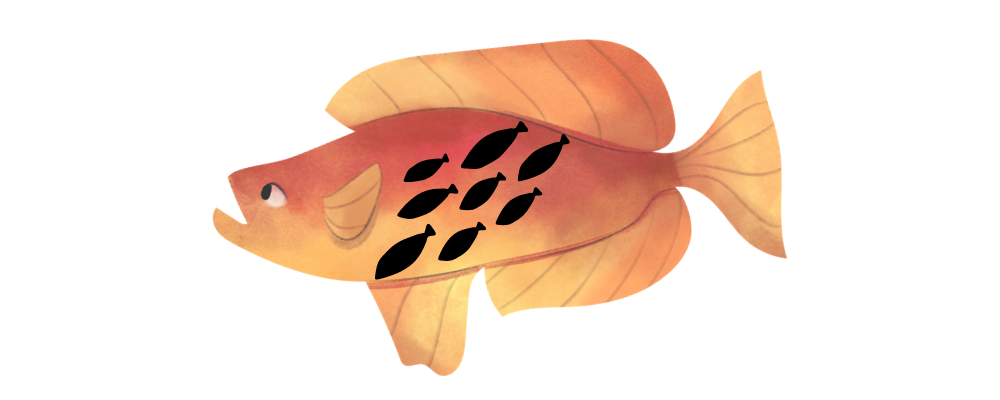According to an article in New York Times, which appeared in an impressive title on June 10, depression, which was "popular" at the beginning of the 2000s, leaves its popularity to the anxiety.
According to an article in New York Times, which appeared in an impressive title on June 10, depression, which was "popular" at the beginning of the 2000s, leaves its popularity to the anxiety. In today's world, economic conditions create dramatic differences in income distribution; and immigration, terrorist organizations and bloody actions are the leading problems in world politics. Thus, it is not surprising that anxiety is the most obvious feeling experienced by people. The increase in emotional awareness and anxiety also allows the discipline of psychology to make its second revolution in history. The psychology, awareness of inner world of people and the over consumption of drugs like Xanax are being introduced to world of literature, so children’s literature is not an exception. One of the biggest concerns of parents is to raise children having anxiety problems, like themselves. They appeal to the discipline of psychology to prevent it, and avoid from concrete and abstract events and situations that may be a factor of fear and anxiety. In children's literature, classical children's stories are purified from horror items and put back to the market.
The elements of anxiety and fear are either removed from the stories or stated as softened as possible. Therefore, they prevent fear and anxiety from entering children's world and traumatizing them. In this article, I would like to leaving the question "what will be the results of isolating children from the social reality" to psychologists, and emphasis on an author, who included reality in his stories as much as possible: Samed Behrengi.
Samed Behrengi was born to a poor family in Azerbaijan in 1939. Behrengi, who continues his life by teaching to children from poor families like himself, focus on these communities in his stories. Themes in his works are poor life, neighborhood, the world of poor children, and the emotional side of his works is established on love, compassion and pride. In addition to all these, the foundation of Behrengi’ stories is established on freedom, war with distorted powers and the mutual worries of these two.
Behrengi's most widely read story, Little Black Fish, begins with the description of a small community in which the little black fish lives who dreams beyond the rules of that small community and desires starting to the journey that he dreams. The traditional power in society wants to kill him because they consider his desires as a rebellion and a case of corruption. The character, who gets rid of the situation with the help of his friends, protects his freedom after winning the war with other powers. There is no end to the story. Behrengi closes it in a spiral structure and at an infinite point. When the story ends, we conclude the following statement: the little black fish probably continues to fight for his freedom, and a small red fish, who listens this story from his grandmother, follows the path of the black fish. In the narrative, those in power who are proscriptive and oppressive acts with the anxiety of losing their positions while those who oppose them acts with the anxiety of losing their freedom and dreams. Behrengi sets the road to the rightful pride and honor of the anxiety of protecting freedom throughout the narrative. He often states that even though this road is full of danger, the fear created by the concrete dangers is very weak in comparison with the fear of losing freedom.
In Ulduz and Talking Doll and Ulduz and Crows, Behrengi creates a girl character named Ulduz (star) surrounded by a stepmother. She is removed to the loft as if she is an undesirable item. On the other hand, she has a friend named Yaşar, who lives with his mother in a quite poor conditions. In this story; representing wisdom against ignorance, Yaşar shares what he learned in school with his mother and Ulduz. Although the mysticism that comes with ignorance is seriously attacked by Behrengi, Ulduz's stories are quite fantastic. Killing Ulduz’s talking doll in the first story, Behrengi actually prepares her for a bigger adventure. In the following story, Ulduz and Yaşar are rescued by the crows from and taken to The City of Crows, where everyone lives in prosperity, due to the fact that they are compassionate, knowledgeable and honorable people. Ulduz lives through these stories in fear of not being able to act as she wishes, and goes to a new country by facing various threats to her freedom. The stepmother tries to understand Ulduz's attitudes in various mystical ways in this process, but she has worries about these things. Behrengi reflects the mystic fears of the family in a quite ironic way.
He tells the story of an existence in A Peach to Thousand Peach; the story of a peach ripening and falling to the ground and becoming a tree again. In the stories I've examined so far, there was a spatial escape and a story of salvation. In A Peach Thousand Peaches, two friends give effort for a peach, which was fallen to the garden of a landowner, and the peach tree grows after this effort but then gets captured. The gardener, recognizing this robust tree, removes it from the place where the two friends planted and sews it back to its previous garden. Now the peach tree has been trapped spatially. Throughout the whole story, the reader sees that the peach tree fear most from returning to that garden because peach wants that only people, who afford to grow the tree, should eat its fruits. In the end, the peach tree is locked up in the garden but cannot bear fruit anymore. At this point, we can see that freedom is not only directed at the space but also at the inner world. The peach tree is threatened to be cut by the gardener many times. However, the fear of death is a kind of fear that can be taken into account compared to the fear that the inner world will be captured and enslaved. Samed Behrengi tells us that the existence can only be possible if one has the personal decision-making authority. Hence, the anxiety originated from the destruction of the body is more than a fundamental existential concern in comparison with the anxiety of being prisoned.
Likewise in Beet Seller Boy, on a cold winter day, we meet a beet-seller boy in a school in a village. Even though he is almost at school age, he sacrifices his education and sells beets in return of his sister’s freedom. Other characters; an old man, who makes the bourgeois carpet weaving work to the villagers, the mother of the children and the villagers. Despite being old and married, the man, abusing family’s being poor, wants to marry the young girl. Beet-seller boy realizes the fact that his sister's marriage with that man actually means selling her freedom and the body in exchange of money. Therefore, he defends the freedom of his sister without fearing from various threats and beatings, and sells beets "in winter" instead of working in carpet business like other villagers. Behrengi makes it possible here that the fear of poverty and deprivation wins against the fear of losing freedom.
Victories in Behrengi's stories, on the other hand, are always bitter ones. The way through victory passes over fear and impossibility... Only one story ends up sadly and we experience the failure as much as possible: Tasseled Camel. It's a very traumatic story when you look at it in this context. The author tells the story of a child who comes with his father to the town to do business, and his friendship with a tasseled camel in the toys shop. Every night, they meet in dreams and travel together all around the world. The tasseled camel shows the unjust distribution of income in the world to the child. One day, suddenly, a rich child and father come and buy the tasseled camel. Crying does not help at that moment. Tasseled camel is a kind of freedom of Latif because he gets rid of his poverty and captivity in the city with the camel. His biggest dream is to save money and buy that camel. This sad end is actually written because of an idea Behrengi wants to give: if we attribute our freedom and our dreams to the things to be bought with money, then undesirable things may occur as in the case mentioned about. The tasseled camel has good intentions but is eventually a product of the system.
Conclusion
Behrengi died in 1968 because of an unknown condition, and we reach these stories thanks to the Persian translations made by his brother. Perhaps the peach tree and he himself were in trouble, we don’t know, but he was not admired by the Shah government. What we know is that his stories can be identified with this geography. The fear against captivity is also at the basis of the story with other items. Behrengi considers freedom as the basic necessities of life and the feeling of anxiety emerges from this necessity -we can particularly see the growing awareness towards it after the World War II and the nuances of the movement of individual and social liberation in these stories.
Anxiety has become, in fact, a part of any society at all times. In history, it can be said that fear is present in literature more intensely sometimes, but it is not possible to mention about a time when there is no fear in society at all. The diversity of these fears changes with the evil experienced and perceived. The concern in the time of Behrengi, which surrounds the whole societies, that the possibility of losing spatial and intellectual freedom has turned out to be an anxiety to die somehow. In these days when the depressive days of the 2000s have turned out to be anxiety, our personal freedom as human beings trapped between terror and states is no longer a vital element, we are all just trying not to die. However, parents try telling to their children about a secure world, which is not true indeed. There is no room in this world to explore new places and defend freedom; because we have sold them to the elements that provide our security against terrorism, and we are trying not to die as a priority. That’s why I think that Behrengi is no longer on the shelves. Moreover, the stories of Behrengi -because they can be violent and quite traumatic sometimes- will disturb today's parents. As a result, Behrengi’s stories are dark stories for the purified world of today’s children. Still, maybe somebody is still fearless to unleash the little black fish to the new journeys. Who knows…
Bibliography
Behrengi, Samed. Bir Şeftali Bin Şeftali. Çev. Deniz Canefe. İstanbul: Can Çocuk, 2016.
______________. Küçük Kara Balık. Çev. Haşim Hüsrevşahi. İstanbul: Can Çocuk, 2016.
______________. Ulduz ve Konuşan Bebek. Çev. Türkan Urmulu ve Ramin Cabbarlı. İstanbul: Kaynak Yayınları,
2015.
______________. Ulduz ve Kargalar. Çev. İldeniz Kurtulan. İstanbul: Everest Yayınları, 2018.
______________. Pancarcı Çocuk. Çev. Mayis Alizade. İstanbul: 1001 Çiçek, 2016.

